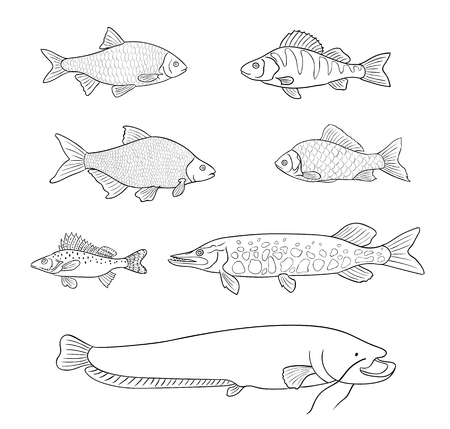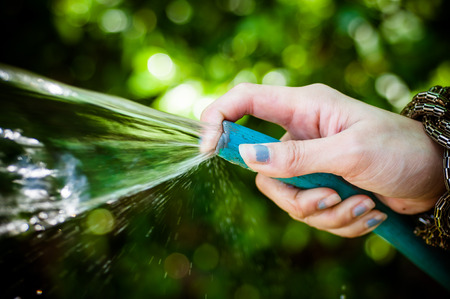1. Introduction to Fish Parasites
Fish parasites are a common concern for both freshwater and saltwater fish keepers, as well as anglers. These tiny organisms can cause significant health issues in fish, leading to disease, stress, and even death if left untreated. Understanding the types of parasites that affect fish, their impact, and how to prevent infestations is crucial for maintaining a healthy aquatic environment.
Common Types of Fish Parasites
Fish parasites come in various forms, including external and internal parasites. Some are visible to the naked eye, while others require microscopic examination. Below is an overview of the most common parasites found in both freshwater and saltwater fish.
| Parasite Type | Description | Affected Fish |
|---|---|---|
| Ich (Ichthyophthirius multifiliis) | A common protozoan parasite that causes white spots on fish. | Mainly freshwater fish |
| Marine Ich (Cryptocaryon irritans) | A saltwater equivalent of Ich, causing similar symptoms. | Mainly saltwater fish |
| Flukes (Trematodes) | Flatworms that attach to gills or skin, causing irritation and breathing difficulties. | Both freshwater and saltwater fish |
| Nematodes (Roundworms) | Internal worms that live in the digestive system, leading to weight loss and poor health. | Mainly freshwater fish |
| Lernaea (Anchor Worms) | A crustacean parasite that burrows into the skin, causing inflammation. | Mainly freshwater fish |
| Copepods (e.g., Caligus spp.) | Tiny crustaceans that attach to the skin or gills and feed on blood. | Mainly saltwater fish |
The Impact of Parasites on Fish Health
The presence of parasites can weaken a fishs immune system, making them more susceptible to secondary infections. Symptoms of parasitic infections vary but commonly include:
- Lethargy: Infected fish may become less active and show signs of weakness.
- Poor Appetite: Affected fish often eat less or stop eating altogether.
- Abnormal Swimming Behavior: Fish may scratch themselves against objects due to irritation.
- Bloating or Weight Loss: Internal parasites can cause digestive issues leading to weight changes.
- Sores or Lesions: Some parasites cause visible wounds or ulcers on the skin.
The Importance of Understanding Fish Parasites
If left untreated, parasitic infections can spread rapidly in aquariums or natural water bodies, affecting multiple fish. This makes early identification and treatment essential. By learning about these parasites, fish keepers and anglers can take preventive measures such as quarantine procedures, proper tank maintenance, and using appropriate treatments when necessary.
2. Types of Parasites in Freshwater Fish
Freshwater fish can be affected by a variety of parasites, ranging from microscopic protozoa to larger worms and crustaceans. These parasites can cause significant health issues, including skin irritation, weight loss, and even death if left untreated. Below, we’ll explore the most common types of freshwater fish parasites, their symptoms, and their effects.
Protozoan Parasites
Protozoa are single-celled organisms that can cause severe infections in freshwater fish. Some of the most common protozoan parasites include:
Ichthyophthirius multifiliis (Ich or White Spot Disease)
- Symptoms: White cysts on the skin, gills, and fins; rapid breathing; rubbing against objects.
- Effects: Causes respiratory distress and skin damage, leading to secondary infections.
Costia (Ichthyobodo)
- Symptoms: Cloudy skin, lethargy, difficulty breathing.
- Effects: Damages the gills and skin, making fish vulnerable to bacterial infections.
Worm Parasites
Worms are another common type of parasite found in freshwater fish. They often infect internal organs or attach to the skin and gills.
| Parasite | Symptoms | Effects |
|---|---|---|
| Anchor Worm (Lernaea) | Sores on the body, inflammation, scratching against surfaces. | Pierces the fish’s skin, causing infections and tissue damage. |
| Gill Flukes (Dactylogyrus) | Lethargy, gasping for air, excessive mucus production. | Deteriorates gill function, leading to oxygen deprivation. |
| Tape Worms | Weight loss despite normal eating habits, bloated abdomen. | Lives in the intestines and absorbs nutrients meant for the fish. |
Crustacean Parasites
Certain parasitic crustaceans attach themselves to freshwater fish and feed on their blood or tissues.
Fish Lice (Argulus)
- Symptoms: Red sores on the body, erratic swimming behavior.
- Effects: Feeds on blood and causes irritation; may lead to bacterial infections.
If you suspect your freshwater fish have parasites, early identification is key to effective treatment. Many of these parasites can be managed with proper quarantine procedures and medicated treatments available at pet stores. In the next section, we will explore saltwater fish parasites and how they impact marine species.

3. Types of Parasites in Saltwater Fish
Saltwater fish face a unique set of challenges when it comes to parasites. Unlike freshwater environments, where conditions can fluctuate more drastically, marine ecosystems tend to be more stable. However, this stability allows certain parasites to thrive and spread more easily among fish populations. Here, we’ll explore some of the most common parasites affecting saltwater fish and how they differ from their freshwater counterparts.
Common Saltwater Fish Parasites
Saltwater fish are susceptible to a variety of parasites, including protozoans, worms, and crustaceans. These parasites can cause significant health issues and impact both wild and aquarium-kept fish.
1. Marine Ich (Cryptocaryon irritans)
Often compared to freshwater ich, marine ich is a protozoan parasite that attaches to the skin, gills, and fins of saltwater fish. It causes white cysts, respiratory distress, and loss of appetite.
2. Amyloodinium (Marine Velvet)
This highly contagious dinoflagellate parasite affects the gills and skin, leading to a dusty or velvety appearance on the fish. Infected fish may show rapid breathing and lethargy.
3. Monogenean Flukes
These flatworms attach to the gills or skin of saltwater fish, leading to irritation, excessive mucus production, and respiratory difficulties.
4. Isopods and Copepods
Certain parasitic crustaceans, such as isopods and copepods, latch onto the skin or inside the mouths of fish. They feed on blood and tissue, weakening their hosts over time.
Comparison Between Freshwater and Saltwater Parasites
| Aspect | Freshwater Parasites | Saltwater Parasites |
|---|---|---|
| Main Types | Ick, Flukes, Anchor Worms | Marine Ich, Velvet Disease, Parasitic Crustaceans |
| Transmission | Easily spreads in confined spaces like aquariums | Can persist longer in stable marine environments |
| Treatment Challenges | Easier to treat with temperature changes and medications | Treatment is complicated due to water chemistry stability |
| Affected Areas | Mainly skin and gills | Skin, gills, internal organs in some cases |
The Challenges of Treating Parasites in Saltwater Fish
Treating parasitic infections in saltwater fish presents several challenges. Many medications that work for freshwater species are not safe for marine environments due to the delicate balance of salinity and beneficial bacteria. Additionally, some parasites have complex life cycles that make eradication difficult without disrupting the entire tank ecosystem.
The Role of Quarantine Tanks
Aquarists often use quarantine tanks to isolate infected fish before introducing them into a main display tank. This helps prevent outbreaks while allowing for targeted treatments without affecting other marine life.
Nutritional Support for Prevention
A strong immune system is key to preventing parasitic infections. Providing a varied diet rich in vitamins and essential nutrients can help saltwater fish resist infestations more effectively.
Understanding these common parasites and their effects on saltwater fish can help aquarists take preventive measures and ensure healthier marine environments for their aquatic pets.
4. How Fish Get Parasites and Transmission Methods
Parasites can enter a fishs environment in many ways, making it essential for fish keepers to understand how infections spread. Below are the most common transmission methods:
Transmission Through Water
Many parasites thrive in water and can spread quickly if conditions are favorable. Poor water quality, overcrowding, and lack of filtration increase the risk of parasite outbreaks. Free-swimming parasites, such as Ich (Ichthyophthirius multifiliis), move through the water to find new hosts.
Infected Live Feed
Feeding live food to fish can introduce parasites into an aquarium or pond. Some live foods, like feeder fish or worms, may carry parasites that infect fish when consumed.
| Live Feed Type | Potential Parasite Risk |
|---|---|
| Feeder Fish | Bacterial and parasitic infections |
| Tubifex Worms | Nematodes and protozoa |
| Daphnia | Lesser risk but can carry microscopic parasites |
Poor Tank Conditions
Aquariums with inadequate filtration, excessive waste buildup, or low oxygen levels create stress for fish, weakening their immune systems. Stressed fish are more susceptible to parasitic infections.
Contact with Wild Fish
If wild fish or unquarantined new fish are introduced into a tank or pond, they may bring parasites with them. Always quarantine new arrivals before adding them to an established habitat.
5. Prevention and Treatment Strategies
Keeping your fish healthy and free from parasites requires a combination of preventive measures and effective treatments. Whether youre a hobbyist or a commercial fish keeper, understanding best practices can help you maintain a thriving aquatic environment.
Best Practices for Preventing Parasite Infestations
Prevention is the first line of defense against parasites. By following these steps, you can minimize the risk of infestations in both freshwater and saltwater fish:
1. Quarantine New Fish
Always quarantine new fish before introducing them to your main tank. This helps prevent parasites from spreading to your existing fish population.
2. Maintain Clean Water Conditions
Poor water quality weakens fish immunity, making them more susceptible to parasites. Regularly test water parameters and perform routine water changes.
3. Avoid Overcrowding
Overcrowding increases stress levels in fish, reducing their ability to fight off infections. Ensure your tank has adequate space for each fish species.
4. Provide a Balanced Diet
A well-balanced diet strengthens fish immune systems, helping them resist parasite infections naturally.
5. Use UV Sterilization
A UV sterilizer can help eliminate free-floating parasite larvae before they infect your fish.
Treatment Options for Parasite Infestations
If your fish become infected with parasites, there are several treatment methods available, including medical and natural solutions.
Medical Treatments
| Treatment | Description |
|---|---|
| Copper-Based Medications | Effective against external parasites like Ich and marine velvet. |
| Methylene Blue | Treats fungal infections and some external parasites. |
| Praziquantel | Mainly used to treat internal parasites such as tapeworms. |
| Formalin | An effective treatment for protozoan parasites but should be used with caution. |
Natural Treatments
| Treatment | Description |
|---|---|
| Epsom Salt Baths | Aids in removing certain external parasites and relieves bloating caused by internal infections. |
| Garlic Extract | Naturally boosts the immune system and helps repel some parasites. |
| Increased Water Temperature | Slightly raising the temperature can speed up parasite life cycles, making treatment more effective (use with caution). |
| Diatom Filters | Catches free-swimming parasite larvae before they infect fish. |
The Importance of Early Detection
The sooner you identify a parasite infestation, the easier it is to treat. Look out for symptoms such as erratic swimming, excessive scratching against surfaces, visible white spots, or unusual weight loss.
6. Conclusion and Best Practices for Fish Health
Keeping your freshwater and saltwater fish healthy means staying proactive about parasite prevention. By understanding the risks, monitoring fish health regularly, and maintaining a clean environment, you can significantly reduce the chances of parasite infestations.
Key Takeaways on Managing Parasite Risks
- Quarantine New Fish: Always quarantine new fish for at least two to four weeks before introducing them to your main tank or pond.
- Source from Reputable Suppliers: Purchase fish from trusted sources that follow proper health protocols.
- Avoid Cross-Contamination: Use separate nets, tools, and water sources for different tanks or systems to prevent parasite transfer.
Monitoring Fish Health
Regularly observing your fish helps catch potential issues early. Look for signs like unusual swimming behavior, loss of appetite, visible spots, or excessive scratching against surfaces.
| Common Signs of Parasites | What It Could Mean |
|---|---|
| White spots on body or fins | Ich (White Spot Disease) |
| Gasping at the surface | Gill parasites or poor water quality |
| Lethargy and weight loss | Internal parasites affecting digestion |
| Scratching against objects | Irritation caused by external parasites |
Maintaining a Parasite-Free Environment
A clean and well-maintained aquarium or pond is essential for preventing parasites. Follow these best practices:
- Regular Water Changes: Perform routine water changes to remove waste and maintain optimal water conditions.
- Filtration and Aeration: Ensure proper filtration and oxygen levels to keep fish stress-free and healthy.
- Avoid Overcrowding: Overcrowding increases stress and makes fish more susceptible to infections.
- Diverse Diet: Provide a balanced diet with high-quality food to strengthen the immune system.
- Treat Promptly: If parasites are detected, use appropriate treatments such as salt baths, medicated food, or specific anti-parasitic medications.
Caring for your fish requires attention and consistency. By following these guidelines, you can create a thriving aquatic environment where your fish stay happy and healthy.


